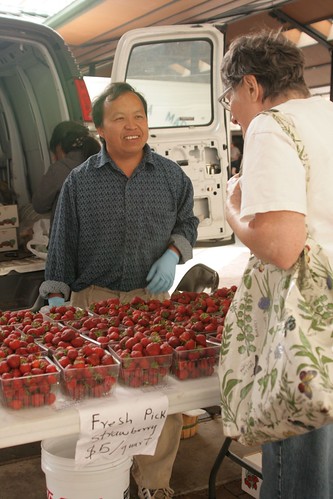This post is part of the Science Tuesday feature series on the USDA blog. Check back each week as we showcase stories and news from the USDA’s rich science and research portfolio.
Do you know who grew your food? Farmer’s markets, eating locally and even the USDA’s “Know your Farmer, Know your Food” campaign are all examples people wanting to know where their food comes from. But while the public’s interest in agriculture is rising, the age of the average American farmer is also on the rise. This is big concern for USDA and industry leadership - we wonder who will be growing your food in the future.

But there is hope. People are going back to farming. About 20% of the 2.1 million U.S. farms are classified as beginning farms, based on the USDA definition. What distinguishes a beginning farm from an established farm? The only clear distinction is simply experience operating a farm. Beginning farms, by USDA definition, are those operated by individuals with 10 years or less experience operating farms.
We are finding that the individuals who are taking over are far removed from the farm, and face unique challenges, including rising cost of farm land, lack of knowledge about accessing farm land and the capital to buy the land, lack of training in sustainable farming practices, a lack of operating capital in their initial years, and many need experiential learning to be successful. That is where we can help. USDA’s Beginning Farmer and Rancher Development Program funds projects to train, educate, and provide outreach and technical assistance to beginning farmers. These projects are very outcome driven and are increasing the knowledge of beginning farmers while strengthening their networks and communities to improve support. Over the last 2 years we have funded 69 programs, in 40 states. The 29 projects funded in 2009 trained more than 5,000 beginning farmers in the first year of the program.
USDA is not alone in our effort to help beginning farmers. Many have realized the importance of training the next generation of farmers. You can read about the trends, programs and projects that demonstrate how the government, academic and nongovernmental organizations (NGOs) are responding in the latest issue of Choices magazine.
